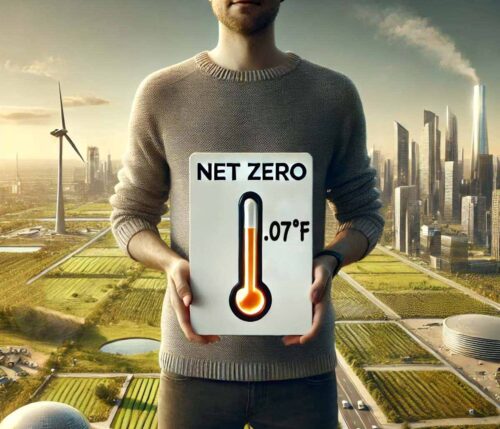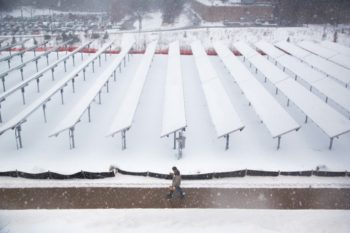
Normally, “no ice should be melting in Greenland in April,” and prior to this “the earliest Greenland had more than 10 percent surface area melting was on May 5, back in 1990.” Observations of Greenland’s ice sheet began with the satellite era beginning in 1979. Prior to that, reporting was done primarily from the ground, air, or reports from sailors and wayfarers. The weather system is also bringing copious amounts of warm rain up from the south and affecting the surface of Greenland’s ice sheet.
Greenland’s ice sheet has an average thickness of about 5,000 feet (1,500 meters), but is only a few meters thick at its edges. Most of Greenland has been covered on and off with ice for the last 2-3 million years, and it is home to many active glaciers and constant melting. It covers about 80 percent of the island of Greenland and is the largest ice mass in the Northern Hemisphere.
This melting is from the top, and Langen notes “it would take centuries to melt the entire ice sheet.” A new study released last week shows that above-average mantle heat, caused by geologic forces, was precipitating the underside of the Northern part of the ice sheet to melt. Called basal melting, this can give a glacier a slippery underside, allowing it to travel faster toward the ocean, where it calves into the ocean and becomes an iceberg.
The study, conducted by the German Research Centre for Geosciences (GFZ), concluded that geothermal heat from an ancient and active hot spot—which lies beneath a significant portion of northern Greenland—is the primary cause for the ice sheet melting – not atmospheric warming.
According to James Kamis, a geologist who has been studying how the Earth’s geology affects our climate, says: “The new GFZ study builds on facts we already know: that Greenland lies along and is directly involved with one of the largest fault / rift zones on the planet, called the Mid-Atlantic / Mid-Arctic Rift System. This 14,000-mile-long fault zone is an upper crustal plate boundary extending from Antarctica to Russia. Along the way it and its branches pass beneath both polar ice caps and the entire length of the Atlantic Ocean.”

















